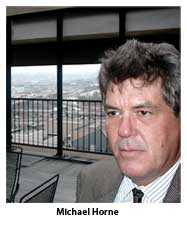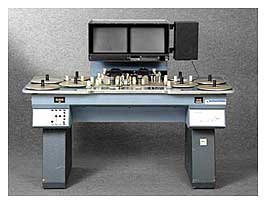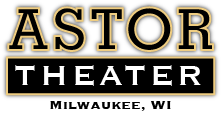You Don’t Need Film To Make Movies These Days

When there comes the time that a product that gave its name to an entire industry has become outmoded, while the industry rolls on, you have to marvel at the staggering pace of technology.
We refer here to film, the product of choice for a century when you wanted high-quality photographic reproduction. From its earliest black and white days, when the product had an unfortunate tendency to self-ignite, to its Technicolor apex, this transparent polymer with its light-sensitive emulsion was unsurpassed for everything from home movies to the most extravagant Hollywood productions.
Although it was the medium of dreams, film itself was a bulky product, that spawned sub-industries of its own, ranging from the chemists and technicians involved in its production, processing and manipulation to highly-skilled professionals who would splice thousands of disparate bits into completed works of the whole, it was a very linear process, as befitted a linear product stored on reels. Film also gave English a new term the cutting room floor, that repository of wasted effort. As a medium for the recording of images, film is soon to go the way of clay tablets, thanks to those ubiquitous zeroes and ones and the very powerful machines that can now process them seamlessly.
The “digital revolution,” (to coin a phrase) is now working its way inexorably through the motion picture industry. At the very least, it has settled the debate between film and video partisans as to the pre-eminent platform for recording moving images. (Video won.) Currently, waves of the revolution are rippling through back-lot backwaters, where the once manual job of readying movies for release is undergoing a radical change. “Nonlinear production,” (NLP) is now the watchword. In the celluloid era, a single foot of film passed through many steps in a very precise order as it was processed, edited, color corrected, cut, spliced, and had special effects, sound and titles added. While one set of workers exhausted themselves with they’re given tasks, the next in line were left to expensively twiddle their thumbs. The studio system, with its assembly line flow of movies, was developed in part to circumvent this sort of idleness. But the inherent physicality of the medium, and the many alchemies involved in its creation made it prone to the bottlenecks that caused the delayed release of many films in the past, costing producers millions and delaying the public’s enjoyment by countless lifetimes in the aggregate.
Well, that excuse is gone. Today’s movies are shot with digital cameras, with digital sound. This data is then downloaded to finishing machines like the Avid DS HD v5.0 machines that, according to company literature, allow editors and digital artists to “experience total creative freedom with full access to a complete rage of seamlessly integrated picture and audio editing, compositing, paint, titling, animation, and media management tools at all times, unobstructed by the barriers or limitations of traditional postproduction.”
Gone are darkrooms, and the noxious chemicals they contained. Banished forever are the splicing blocks, the boxes of razor blades, the white gloves and the wax pencils. The cutting room floor may still exist, but it’s now in a place called cyberspace.
Sneak Preview
Since it would be unthinkable for any revolution in Hollywood to bypass Milwaukee, it was thought that a demonstration of a digital editing system would be in order. Acting with the audacity that is characteristic of all his enterprises, Jim Searles arranged with the folks at Midwest Media Group to have a suite of editing tools, complete with a technician, show off this new and very expensive equipment to a small group of interested filmmakers and friends. The event took place on an otherwise bleak March day at the upstairs screening room at the Astor Street Performing Arts Center, the proposed film and video production facility that Jim Searles is putting together at the Brady Street Pharmacy (nee Astor Theater.) The screening room is just a part of the 20,000 sq. ft. building on Milwaukee’s East Side. The screening room-editing facility is 27 feet wide, 65 feet long and has a 14-foot ceiling height. Just the week before crews from Creative Construction sprayed the ceiling and upper four feet of the walls with a sound-deadening black coating that really made the place look just like something out of a Hollywood back lot, especially with a darn near million dollars of equipment humming away in the room.
Meet the Machine

The heart of the operation is a rather simple workstation dominated by a two 21-inch HDTV monitors. On the screen are images to be edited and a host of pull down menus for an array of options. These include at least 22 tools for picture editing, and eleven “effects, filters, time effects and transitions,” like “high-speed Gaussian blur, noise effects, fractal noise generator, edge detection, emboss, fades, sharpen, reticulation, stamp, ripple, threshold and gradient effects; deflickering, dithering, posterize and solarize effects.” Did we ever think the day would come when dithering would be so easy?
The menus also include options for character generation, keying tools, color correction, paint and audio editing and mixing. Keypad and mouse control everything. Fired up and ready to go, the display, with a frozen image on the screen and all sorts of menus, looks like a very expensive computer with an attractive screen saver.
It certainly is a muscular unit. With such hardware components as 1.5GB RAM, dual 1.7Ghz Pentium 4 chips, 40GB Ultra-ATA system and audio drive along with God knows what else, there is a lot of power to this computer as the demonstration was soon to show.
Roll Em!
The show opened with the picture of a mountain that was frozen on the screen as the viewers arrived. Soon, the mountain came to life, as the technician zoomed into the action of a few climbers deep in a crevasse. Soon that picture was blended with some rafters and then it dissolved to some mountain trekkers. Skillfully, with just a flick of a mouse, the picture was cropped, edited, dissolved and generally moved around. Every editing effect from lightening shadows to deepening colors and adding titles was achieved instantaneously as soon as the proper command was entered. In no more than a few minutes an entire finished piece, with all sorts of special effects was completely, and nonlinearly, edited and finished. In the linear celluloid film era this would have required multiple handling of the film, passing it from one department to another, encountering possible bottlenecks and eating up a whole lot of expensive time.
In a digital studio environment many of these tasks could be performed simultaneously on a number of workstations. Titles, for example, could be inserted in the film even before, say, color correction. In the past, this would have been unthinkable.
Rob Yeo, chairman of the Film department at UWM was among those witnessing the demonstration. He pointed out the device’s potential in education. With digital editing he would be able to both critique a student’s work as well as demonstrate his point to the student by editing the piece on the spot.
Let’s say Yeo felt a certain scene would have been more effective with a “tighter” shot, and maybe a softer focus. As it stands, he now could only mention this to a student, who may or may not get the point. With digital editing Yeo could tighten the shot, soften the focus (and do a little dithering, if need be.) The student could see Yeo’s changes on the spot. And, with a flick of a button, the student could restore his original version once the professor turned his attention elsewhere. Thanks to the system’s Internet capabilities, a student’s complete output could be available for streaming at any time. This would vastly simplify the process of submission of films for festivals, critiques or as proposals. UWM would consider using the facility for student and graduate projects, and the demonstration at ASPAC was to acquaint possible funders of the potential of the machine and the space. In the opinion of Jim Searles, Milwaukee needs a facility to produce and edit films for the public good. “Once you graduate from UWM you can’t use their facilities. We need a place where graduates and students can work together.”
This is no small goal, and Searles has prepared some preliminary budgets to show that his dream of a tax-exempt, non-profit film production center can make sense. “I can make money from commercial productions,” he says, “but that’s not what’s important. Open windows! Give the young filmmakers a chance to reflect Milwaukee’s explosive talent. I want to see a one hour special on channel 10 on the City Ballet Theatre.”
Of course, he wants to see it with digital production, editing and presentation. “There is no reason to have it done any other way. This is the future; there is no turning back, and nobody’s doing it on a community level. We have already lost a generation to Hollywood junk. We have lost our values and our moral compass. It is time to return filmmaking to the people, and we must use state-of-the art equipment.”
With equipment like the Avid DS HD v5, and its dozens of features and myriad possibilities, Jim’s dancers will float onto the screen, defying gravity in front of an animated cityscape teeming with color. And with a flip of a switch, the editor will be able to access the “film effect” menu, which “simulates the appearance of celluloid film.” After all, the more things change, the more they stay the same.
Questions? Comments? Call 414 273-5478 or e-mail horne.milwaukeeworld@gmail.com
Coming Soon to a Theater Near You – Digital editing and production is only part of the technological revolution in film. The next step will be an expensive one – the retrofitting of movie theaters worldwide with digital projectors. This hot topic will be covered in the next issue of Filmmakers.
